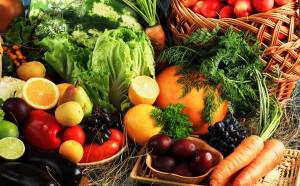The second most frequent question I was asked during my navigating years, immediately following, “How did I get breast cancer,” was, “What should I be eating now that I’ve had cancer”?
If the person asking me the question was still in active treatment, I would advise them to speak to their oncologist about what to eat and not to eat. Some foods are definite no-nos while on chemo and some may be problematic even on radiation.
Most hospital and free-standing treatment centers have nutritionists on staff and can make patient referrals for a nutrition consult.
For those who were finished active treatment, I would share that while I am not a nutritionist, I read cancer publications and more and more of them are endorsing moving towards a more plant based diet.
 Plant based diets endorses eating lots of fresh produce. But, even fresh produce carries a health risk…pesticides.
Plant based diets endorses eating lots of fresh produce. But, even fresh produce carries a health risk…pesticides.

The answer…buy organic, if you can, as produce grown organically is grown without synthetic pesticides or synthetic fertilizers.
Is organic food better? As far as the nutrient value of the food, there is really no significant difference between organically grown food and conventionally grown food. The difference, and it is a difference, is that organically grown produce does not have chemical pesticides and herbicides.
The Environmental Work Group ( EWG), a nonprofit organization that uses the power of public information to protect public health and the environment, put together a Shopper’s Guide to Pesticides, which identifies those fruits and vegetables that carry the highest risk of pesticides and those that are considered less of a pesticide risk.
What follows is their list of the “Dirty Dozen and the Clean 15 of Produce.” EWG suggests that you buy organic for produce appearing on the Dirty Dozen list as these fruits and vegetables have the highest levels of pesticides.
If buying organic produce proves too expensive a choice, be sure to carefully and thoroughly clean fruits and vegetables appearing in the Dirty Dozen list. Peel before you eat, whenever feasible.
The Dirty Dozen of Produce: Apples, Celery, Strawberries, Peaches, Spinach, Nectarines ( imported), Grapes, Bell Peppers, Potatoes, Blueberries, LettuceKale/Collard Greens
The Clean 15 of Produce: Onions, Sweet Corn, Pineapple, Avocado, Asparagus, Sweet Peas, Mangoes, Eggplant, Cantaloupe (domestic), Kiwi, Cabbage, Watermelon Sweet Potatoes, Grapefruit, Mushrooms
Source: The Environmental Work Group ( EWG) www.ewg.org

